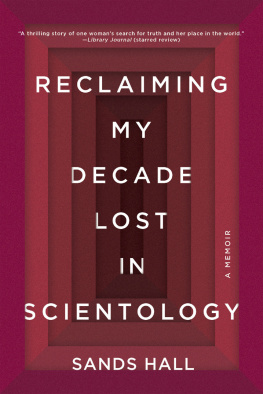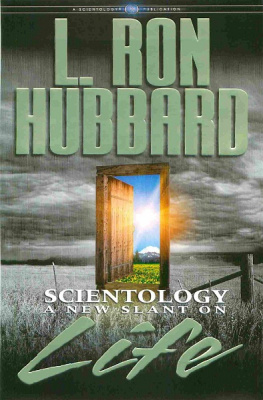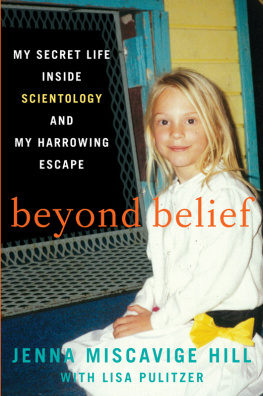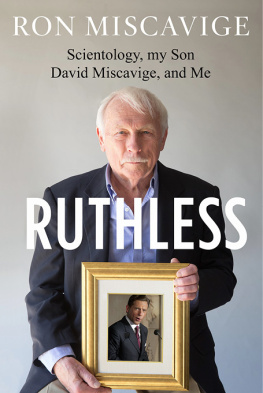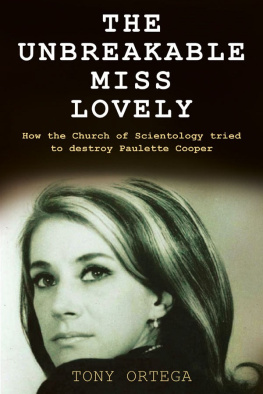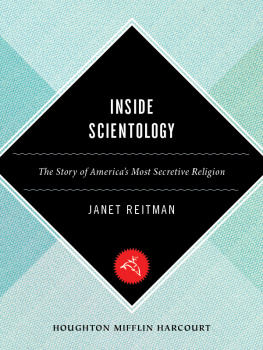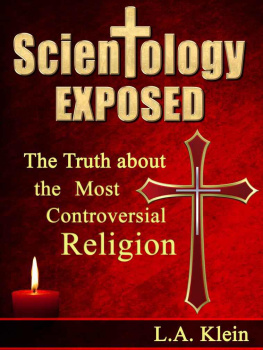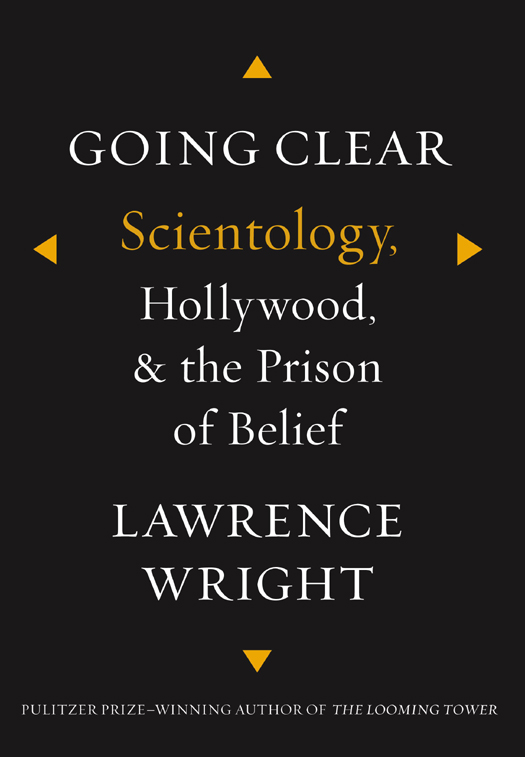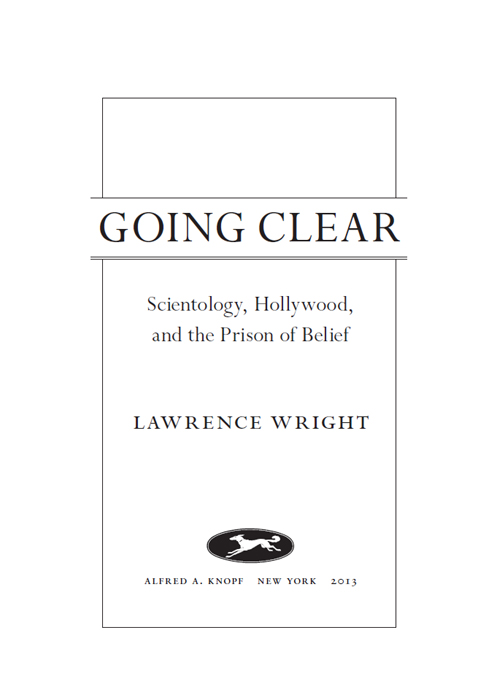THIS IS A BORZOI BOOK
PUBLISHED BY ALFRED A. KNOPF
Copyright 2013 by Lawrence Wright
All rights reserved. Published in the United States by Alfred A. Knopf, a division of Random House, Inc., New York, and in Canada by Random House of Canada Limited, Toronto.
www.aaknopf.com
Knopf, Borzoi Books, and the colophon are registered trademarks of Random House, Inc.
Hardcover ISBN: 978-0-307-70066-7
eBook ISBN: 978-0-385-35027-3
Library of Congress Cataloging-in-Publication Data is on file at the Library of Congress
Jacket design by Peter Mendelsund
v3.1_r1
To my colleagues
at
The New Yorker
Contents
Introduction
Scientology plays an outsize role in the cast of new religions that have arisen in the twentieth century and survived into the twenty-first. The church wont release official membership figures, but informally it claims 8 million members worldwide, a figure that is based on the number of people who have donated to the church. A recent ad claims that the church welcomes 4.4 million new people every year. And yet, according to a former spokesperson for the church, the International Association of Scientologists, an organization that church members are forcefully encouraged to join, has only about 30,000 members. The largest concentration, about 5,000, is in Los Angeles. A survey of American religious affiliations compiled in the Statistical Abstract of the United States estimates that only 25,000 Americans actually call themselves Scientologists. Thats less than half the number identifying themselves as Rastafarians.
Despite decades of declining membership and intermittent scandals that might have sunk other faiths, Scientology remains afloat, more than a quarter century after the death of its chimerical leader, L. Ron Hubbard. In part, its survival is due to colossal financial resourcesabout $1 billion in liquid assets, according to knowledgeable former members. Strictly in terms of cash reserves, that figure eclipses the holdings of most major world religions. Scientologys wealth testifies to the avidity of its membership, relentless fund-raising, and the legacy of Hubbards copyrights to the thousand books and articles he published.
The church also claims about 12 million square feet of property around the world. Hollywood is the center of Scientologys real-estate empire, with twenty-six properties valued at $400 million. The most recent addition to the churchs Hollywood portfolio is a television studio on Sunset Boulevard formerly owned by KCET, acquired in order to open a Scientology broadcasting center. In Clearwater, Florida, where Scientology maintains its spiritual headquarters, the church owns sixty-eight largely tax-exempt parcels of land, valued at $168 million. They include apartment buildings, hotels and motels, warehouses, schools, office buildings, a bank, and tracts of vacant land. The church often acquires landmark buildings near key locations, such as Music Row in Nashville, Dupont Circle in Washington, DC, and Times Square in New York City. A similar strategy governs the placement of Scientologys holdings in other countries. Typically, these buildings are magnificently restored architectural treasures, lavishly appointed, even if the membership is negligible. The church owns a five-hundred-acre compound in Southern California and a cruise ship, the Freewinds, which is based in the Caribbean. The Church of Spiritual Technology, the branch of Scientology that owns the trademarks and copyrights to all church materials, including Hubbards immense body of popular fiction, maintains secret bases in several remote locations in at least three American states, where the founders works are stored in titanium canisters in nuclear-blast-resistant caverns. One of the vault locations, in Trementina, New Mexico, has an airstrip and two giant interlocking circles carved into the desert floora landmark for UFOs, some believe, or for Hubbards reincarnated spirit, when he chooses to return.
There are really three tiers of Scientologists. Public Scientologists constitute the majority of the membership. Many of them have their first exposure to the religion at a subway station or a shopping mall where they might take a free stress test or a personality inventory called The Oxford Capacity Analysis (there is no actual connection to Oxford University). On those occasions, potential recruits are likely to be told that they have problems that Scientology can resolve, and they are steered to a local church or mission for courses or therapy, which the church terms auditing. Thats as far as most new members go, but others begin a lengthy and expensive climb up the churchs spiritual ladder.
The mystique that surrounds the religion is owed mainly to the second tier of membership: a small number of Hollywood actors and other celebrities. To promote the idea that Scientology is a unique refuge for spiritually hungry movie stars, as well as a kind of factory for stardom, the church operates Celebrity Centres in Hollywood and several other entertainment hubs. Any Scientologist can take courses at Celebrity Centres; its part of the lure, that an ordinary member can envision being in classes with notable actors or musicians. In practice, the real celebrities have their own private entry and course rooms, and they rarely mix with the publicexcept for major contributors who are accorded the same heightened status. The total number of celebrities in the church is impossible to calculate, both because the term itself is so elastic and because some well-known personalities who have taken courses or auditing dont wish to have their association known.
An ordinary public Scientologist can be inconspicuous. No one really needs to know his beliefs. Public members who quit the church seldom make a scene; they just quietly remove themselves and the community closes the circle behind them (although they are likely to be pursued by mail and phone solicitations for the rest of their lives). Celebrity members, on the other hand, are constantly being pressed to add their names to petitions, being showcased at workshops and galas, or having their photos posted over the logo Im a Scientologist. Their fame greatly magnifies the influence of the church. They are deployed to advance the social agendas of the organization, including attacks on psychiatry and the pharmaceutical industry, and the promotion of Hubbards contested theories of education and drug rehabilitation. They become tied to Scientologys banner, which makes it more difficult to break away if they should become disillusioned.
Neither the public nor the celebrity tiers of Scientology could exist without the third level of membershipthe churchs clergy, called the Sea Organization, or Sea Org, in Scientology jargon. It is an artifact of the private navy that Hubbard commanded during a decade when he was running the church while on the high seas. The church has said on various occasions that the Sea Org has 5,000, 6,000, or 10,000 members worldwide. Former Sea Org members estimate the actual size of the clergy to be between 3,000 and 5,000, concentrated mainly in Clearwater, Florida, and Los Angeles. Many of them joined the Sea Org as children. They have sacrificed their education and are impoverished by their service. As a symbol of their unswerving dedication to the promotion of Hubbards principles, they have signed contracts for a billion years of serviceonly a brief moment in the eternal scheme, as seen by Scientology, which postulates that the universe is four quadrillion years old.


